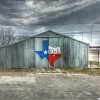Talking God
Also known as Talking God to Be One, Soft Talker, or Dawn Bearer (hastseyalti, yeibeichai), Talking God is a main Navajo deity. One of the four Holy People who live in the mountains, Talking God is associated with the color white, acts as a mentor, guides human life, helps Changing Woman give birth to and prepare the Monster Slayer Twins for their fateful battles, and can travel on rainbows. He plays a very large role in the Navajo creation story, helping create First Man and First Woman among other things .
Talking God is also known for his compassion, being one of the few deities in the Navajo cosmology who is a constant advocate on behalf of The People, which is how the Navajo, or Diné, refer to themselves.










